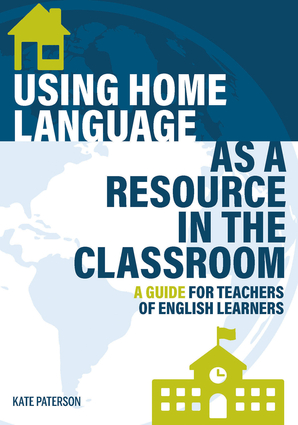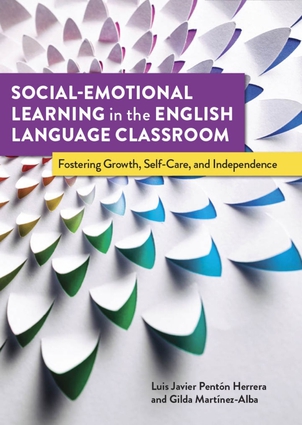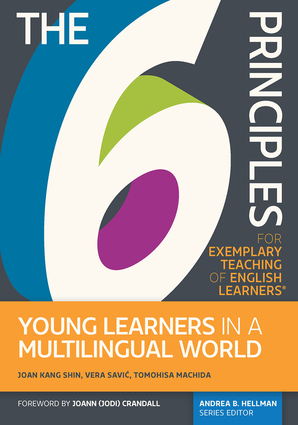Free TESOL Journal Article: "Teacher Language Practices That Support Multilingual Learners: Classroom-Based Approaches From Multilingual Early Childhood Teachers"
by Christopher J. Wagner
This article first appeared in TESOL Journal, Volume 12, Number 1. Subscribers can access issues here. Only TESOL members may subscribe. To become a member of TESOL, please click here, and to purchase articles, please visit Wiley-Blackwell. © TESOL International Association.
|
Abstract
The language practices used by teachers in schools directly impact the language development and reading performance of multilingual children. Despite the important effect of teacher language choices on children’s language learning, there is a considerable need to better understand what constitutes effective multilingual language practices for teachers. This study uses teacher inquiry to examine the language practices multilingual early childhood teachers develop, implement, and refine when supported to critically examine their teaching practice. Participants were five multilingual early childhood teachers with varying language histories, program settings, and professional experiences. Findings describe themes that capture the key practices and guiding ideas from the knowledge developed by these teachers. These themes provide guidance on practices that can leverage the language capacities of multilingual teachers and show ways that multilingual teachers can make language choices that support multilingual learners. This study centers multilingual teachers’ voices and knowledge about language and culture, and highlights the critical role of teachers as producers of new knowledge and language practices. |
1. Introduction
Multilingual children’s language development is influenced by the quantity, diversity, and sophistication of the language practices used by their teachers in school (Bowers & Vasilyeva, 2011; Castro, Páez, Dickinson, & Frede, 2011). Language input is central to how children learn languages, and providing opportunities for children to be exposed to high-quality language that is at and slightly above learners’ ability plays a central role in effective language instruction for children (Dubiner, 2019; Krashen, 1985). The quality use of home languages to explain and discuss ideas is connected to increased vocabulary learning in the home language, with potential benefits to English language learning (Hindman & Wasik, 2015). The use of children’s home languages likewise plays a role in literacy learning, with the increased use of these languages by the teacher linked to higher reading performance at the end of prekindergarten (Burchinal, Field, López, Howes, & Pianta, 2012).
Though teachers’ language choices can play a key role in children’s language development, little attention has been given to identifying effective multilingual language practices for teachers (Langeloo, Lara, Deunk, Klitzing, & Strijbos, 2019). The study reported in this article considered teachers’ language practices in early childhood classrooms, focusing on how multilingual teachers make instructional choices and develop practices about when and how to draw on their own multilingualism to support children’s learning.
2. Teacher Language Practices
Multilingual teachers make in-the-moment decisions about what languages to use in the classroom. These include decisions to use multilingual interactions to support communication, scaffold learning, and manage classroom activities (Durán & Palmer, 2014; Gort & Pontier, 2013; Gort & Sembiante, 2015). Recent work on multilingual pedagogies has framed these movements across languages as translanguaging (García & Kleifgen, 2019). Translanguaging describes the full range of multilingual persons’ language practices, including the flexible movement between languages that reflects the real language practices of many multilinguals (Otheguy, García, & Reid, 2015).
Within a translanguaging approach, teachers make decisions about when to use multiple languages in the classroom and how to incorporate these practices into classroom instruction. Though teachers’ language use during classroom interactions may not always represent conscious choices, teachers can and do make active decisions about when and how to draw on their multiple languages. These include decisions about language choice and language mode (Grosjean, 2010). Language choice refers to the selection of a primary language. Language mode is the decision to use only one language or more than one and includes whether, and in what ways, a multilingual person chooses to draw on languages other than the primary language. Both language choice and mode can change over the course of an interaction as a speaker makes active choices and adapts within the context of the interaction...
For educational use only; not for reproduction.
This article first appeared in TESOL Journal, 12(3), e583. For permission to use text from this article, please go to Wiley-Blackwell and click on "Request Permission" under "Article Tools."
doi.org/10.1002/tesj.583
TESOL Blogs
Interested in writing a blog for TESOL?
Read the submission guidelines and send us your post!
Check out some of the most recent TESOL Blogs:
|
Cultivating Belonging in the Classroom: 2 Practical Activities, by Naashia Mohamed

As someone who researches identity and belonging, I have spent many hours talking to people about how they feel about their place in school and society and how they position themselves in relation to others. One adolescent girl from Samoa described how she felt on her first day of school in New Zealand: “I felt uncomfortable. It was my first time sitting in class and everyone around me spoke English. It was weird. Like watching a TV programme. I was just watching, and not part of what was happening.”
Fiafia’s experience is not uncommon among immigrant students and those who come from refugee backgrounds. An OECD (2020) report suggests that one in three students around the world do not feel a sense of belonging to their school. What is important is how we deal with these experiences, and work toward helping students to connect better to the school. Read more. |
|
4 Ways Teachers of ELs Differ From Reading Teachers, by Barbara Gottschalk

“Are you teaching them to read?” asked the custodian as she unlocked the door to my classroom. I had forgotten my key and needed to get ready for my before-school class with English learners (ELs). I didn’t have time to go in to detail so I simply replied, “I’m teaching them English!” Unlike the helpful custodian, we TESOLers know that English language development for ELs is so much more than reading. In fact, the best way to help ELs learn to read better in English is to help their overall English language development.
So what do teachers of ELs do differently compared to reading teachers for native speakers? Last month’s blog with Pat Lathers discussed the differences when teaching adults; this month. let’s focus on how teachers of younger ELs may differ from their reading teacher counterparts: Read more. |
|
STEM and ELT: 9 Strategies to Help ELs Learn Science (Part 1), by Darlyne de Haan
 I am very excited about the topics for the next two months because I will be focusing on strategies that all teachers can use to help English learners (ELs) be successful contributors in the science classroom no matter their level of language proficiency. This blog will cover four of the nine strategies, and the remaining five strategies will be covered in my November blog post. I am very excited about the topics for the next two months because I will be focusing on strategies that all teachers can use to help English learners (ELs) be successful contributors in the science classroom no matter their level of language proficiency. This blog will cover four of the nine strategies, and the remaining five strategies will be covered in my November blog post.
Science constitutes one of the best subjects for ELs to practice reading, writing, listening and speaking English if the science is taught as inquiry based and using hands-on activities, links to prior knowledge, and allows time allowed for student collaboration. All of these characteristics enhance and give depth to the EL experiences in science. Because science content and language can be learned simultaneously, science has a distinct place in the development of academic language. Read more. |
TESOL Bookstore

Featured Resources from TESOL Press
 Using Home Language as a Resource in the Classroom: A Guide for Teachers of English Learners
Using Home Language as a Resource in the Classroom: A Guide for Teachers of English Learners
Kate Paterson
What can educators do right now, in their own classrooms, to support students of varied cultures and languages? Written for current and future teachers of ELs across various educational and geographical settings, this concise guide provides educators with specific instructional practices to promote greater inclusion and educational equity for their students. Key topics covered in this book include: why home language is essential to student success; incorporating home language into instruction; planning plurilingual lessons and inclusive classrooms; home language and learning in the digital age; reimagining instructional materials; and using home language to advance social justice.
 Social-Emotional Learning in the English Language Classroom: Fostering Growth, Self-Care, and Independence
Social-Emotional Learning in the English Language Classroom: Fostering Growth, Self-Care, and Independence
Gilda Martinez-Alba and Luis Javier Pentón Herrera
While SEL is becoming increasing critical for learners’ success, teachers often feel unprepared to incorporate or address it in their classrooms. This book serves as a practical, concise, and easy-to-follow reference that English language teachers in K-12 and adult education and English language teacher educators can use in their classrooms. It is one of the limited emerging SEL resources available that is tailored to the English language teaching field and contributes to filling the existing gap of SEL in English language education. Teachers will be equipped with the necessary knowledge and skills to practice self-care and be confident in implementing SEL in their learning spaces to support and benefit their learners.
 The 6 Principles for Exemplary Teaching of English Learners®: Young Learners in a Multilingual World
The 6 Principles for Exemplary Teaching of English Learners®: Young Learners in a Multilingual World
Joan Kang Shin, Vera Savic, and Tomohisa Machida
This book guides educators in teaching young learners (2- to 12-year-olds) in an English as a foreign language setting by using The 6 Principles for Exemplary Teaching of English Learners® as a framework. A core set of principles for the exemplary teaching and learning of English as a new language, The 6 Principles and their recommended practices are targets of teaching excellence that provide teachers with the knowledge to improve instruction and assessment. Instructional techniques are illustrated throughout the book with numerous classroom examples, case studies, checklists, and vignettes.